Avoid growing a toxic garden that’s surrounding your landscape, wildlife and loved ones. Knowing which plant species possess toxic traits will help you grow a healthy garden friendly to your surrounding environment.
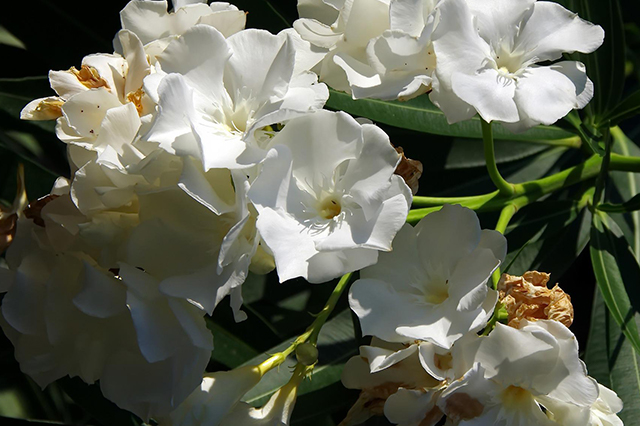
gardeninginfo-online.com gathered crucial information on identifying what plants are poisonous to humans and wildlife.
1. Deadly Nightshade (Atropa belladonna)
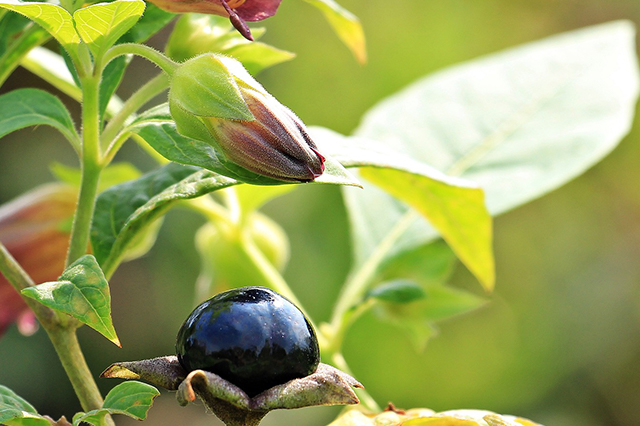
The deadly nightshade is a perennial plant with long, thin branches. Its leaves are oval-shaped with smooth edges and pointed ends. They grow on the plant’s thin branches in an alternate pattern and are poisonous. The most distinctive feature of this plant species is the purple flowers with reflexed petals and a yellow cone at the center, which blooms from late May through August.
Hardiness Zone – 5 through 9
Associated Danger – All parts of this plant are toxic, but the sweet, purplish-black berries that are attractive to children pose the most significant danger. Symptoms of poisoning include rapid heartbeat, dilated pupils, delirium, vomiting, hallucinations, and potential death from acute respiratory failure.
2. Oleander (Nerium oleander)
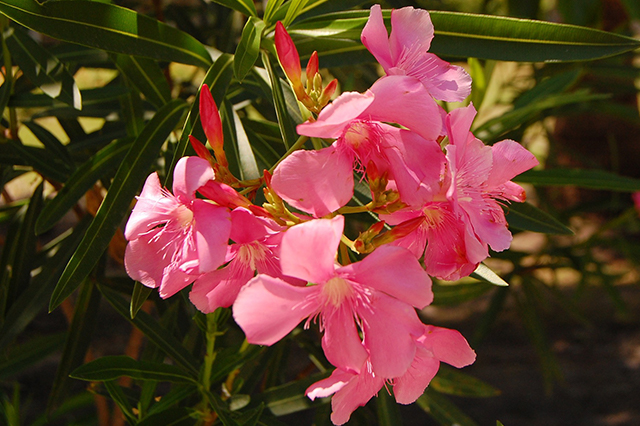
Often called rosebay, this Mediterranean native is characterized by its tall shrubby habit and its thick lance-shaped opposite leaves. The flowers are borne in terminal clusters and may appear in a rose color, rarely white or yellow.
Hardiness Zone – 8 through 10
Associated Danger – All parts of Nerium oleander (leaves, flowers, stems, twigs, and roots) are toxic. Oleander poisoning can adversely affect the heart, nervous system, stomach and intestines, eyes, and skin.
Note: Cut stems release a sticky latex that can severely irritate the skin. Wear gloves when you handle clippings or remove the plant altogether.
3. Tobacco (Nicotiana tabacum)

This is a plant with leaves containing high levels of the addictive chemical nicotine. After harvesting, tobacco leaves are cured, aged, and processed in multiple ways. The resulting products can be smoked (in cigarettes, cigars, and pipes), applied to the gums (as dipping or chewing tobacco), or inhaled (as snuff).
Hardiness Zone – 2 through 10
Associated Danger – Those who plant, cultivate, or harvest tobacco are at high risk of suffering from nicotine poisoning, known as “Green Tobacco Sickness.” This illness causes severe nausea and vomiting that can lead to hospitalization.
4. Rosary Pea (Abrus precatorius)
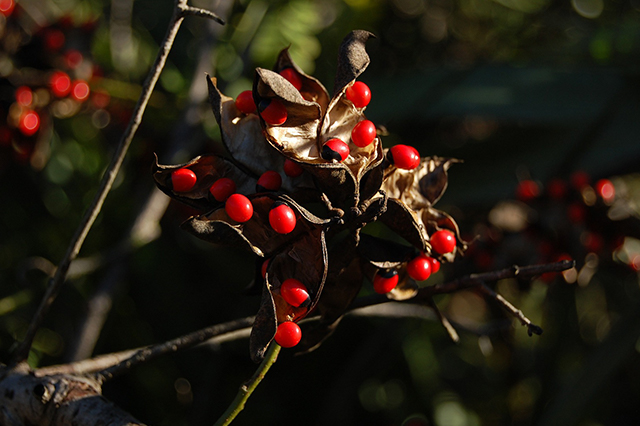
Also known as coral bean, crab’s eye, jequirity bean, and prayer bead, Rosary Pea is an ornamental, twining, woody vine reaching heights of 10 to 20 feet when supported by other plants or trees. This plant’s leaves are alternate, compound, and feather-like, with small oblong leaflets. Its flowers are numerous and appear in the leaf axils along the stems.
Hardiness Zone – 9 through 11
Associated Danger – Abrus precatorius is highly toxic and can be fatal if ingested. In its native range, the plant’s roots are used to induce abortion and relieve abdominal discomfort. One of the most deadly plant toxins, abrin, is produced by this species.
5. Castor Bean (Ricinus communis)
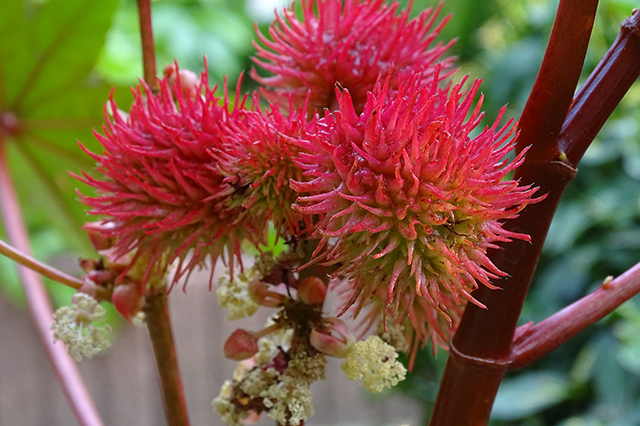
Castor bean is a fast-growing perennial large shrub or small tree. This is an evergreen herbaceous or semi-woody species. This robust, tender plant can grow to 40 feet tall, developing woody stems over time in frost-free climates.
Hardiness Zone – 9 through 11
Associated Danger – Ricin is a poison found naturally in castor beans. If castor beans are chewed and swallowed, the released ricin can cause injury. Potentially lethal doses reported for children and adults are three beans and four to eight beans, respectively.
6. Water Hemlock (Cicuta maculata)
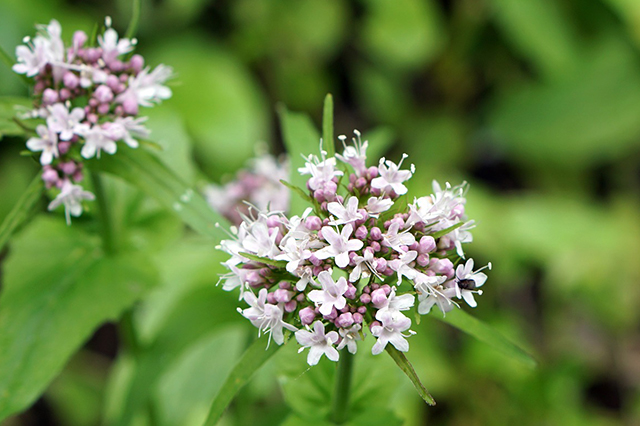
Water hemlock has small, white flowers that grow in umbrella-like clusters. Side veins of the leaves lead to notches, not to tips at the outer margin. Poison-hemlock stems have reddish or purple spots and highly-visible streaks.
Hardiness Zone – This species is common throughout the north temperate zone.
Associated Danger – Water hemlock is the most violently toxic plant in North America. Only a small amount of the plant’s toxic substance is required to produce poisoning in wildlife, livestock, or humans. The toxin cicutoxin, acting directly on the central nervous system, is a violent convulsant.
7. White Snakeroot (Ageratina altissima)

Growing 1 to 3 feet in height, white snakeroot is an upright, many-branched perennial with smooth (sometimes hairy) stems and fibrous roots.
Hardiness Zone – 3 through 8
Associated Danger – The leaves and stems of white snakeroot contain tremetol, which is toxic to both animals and humans. Tremetol is an accumulative toxin that takes time to build to toxic levels. The toxin directly affects the heart and causes severe muscular degeneration, loss of coordination, tremors, and an irregular heart rate.
Avoid These Poisonous Garden Plants
In this article, you discovered which plant species are poisonous and sold never be planted in your garden.
Avoiding poisonous plants in your garden will help you support surrounding wildlife while protecting your loved ones from potential poisoning.
Allowing poisonous plant species to flourish in your garden puts wildlife, your pets, and your loved ones at risk of severe illness, hospitalization, or worse.
Sources:
csuvth.colostate.edu/poisonous_plants/Plants/Details/60
plants.ces.ncsu.edu/plants/atropa-bella-donna/
florida.plantatlas.usf.edu/plant.aspx?id=1758
plants.ifas.ufl.edu/plant-directory/abrus-precatorius/
hort.extension.wisc.edu/articles/castor-bean-ricinus-communis/
extension.umass.edu/landscape/weeds/cicuta-maculata
uaex.uada.edu/yard-garden/resource-library/plant-week/Eupatorium-rugosum-Ageratina-altissima-Chocolate-White-Snakeroot-11-15-2019.aspx
The post Poisonous Garden Plants to Avoid appeared first on http://gardeninginfo-online.com.
No comments:
Post a Comment